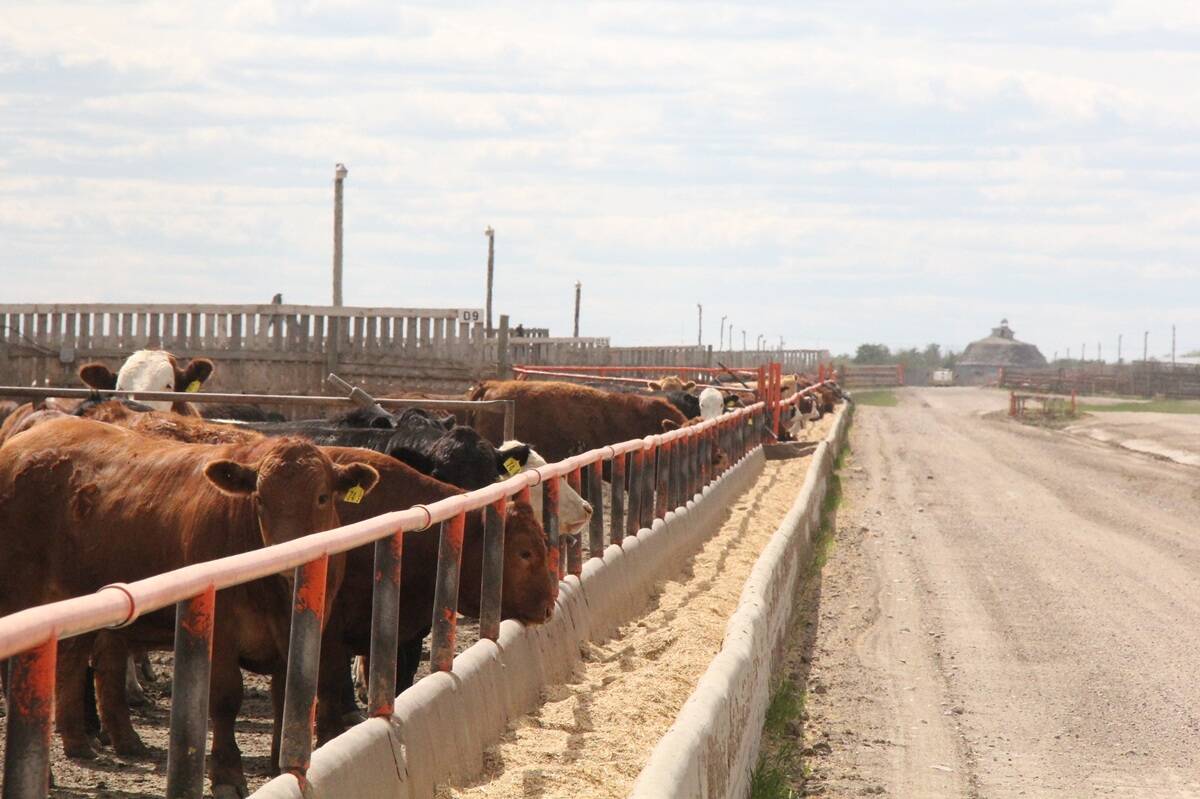Research and trials have confirmed feed efficiency varies from one animal to another. It’s also true climate extremes influence a cow’s thermoregulation, but are they connected? Are more feed-efficient cattle better at weathering the peaks and valleys of climate challenges?
These questions formed the basis of a recent trial at the University of Alberta’s Roy Berg Kinsella Ranch. Headed up by Dr. Gleise M. da Silva, assistant professor in the faculty of agricultural, life and environmental sciences, the study’s goal was to follow up on other small samples of research data suggesting these two aspects were connected.
“We constantly face heat and cold extremes here in Western Canada,” Silva says. “Our ranch’s year-round herd should be well adapted, so we wanted to find a relationship between tolerance to weather conditions and feed efficiency.”
Read Also

Unwinding the fibre in feedlot cattle diets
Research into how barley rolling method and undigestible NDF levels affect animal performance and digestive health in finishing diets
Setup and testing
The trial began in the spring of 2022 with Silva selecting 49 previously residual feed intake efficiency-scored, yearling replacement heifers. The group spanned a range of both high- and low-scoring animals for trial balance, with each given a rumen bolus to measure location, steps and activity, along with rumen temperature which previous research had linked to core temperature.
Natural bull service was used.
Heifers were weighed every 14 days to measure average daily gain. Blood samples were collected, sampled and tested for hormone and protein status. These tests offered valuable informational data related to stress indicators. Activity and energy levels were also examined and recorded. The rumen boluses consistently supplied and documented rumen temperature for later analysis.
“What made this more challenging was these heifers were becoming pregnant,” Silva says. “Blood indicators, especially the hormones, were changing because of this, so when we checked data and ran statistics, we needed to consider the seasons separately due to pregnancy’s effects.”
Environmental, weather and climate data were also collected including temperature, humidity, solar radiation and wind speed. Grasses and forages were sampled to understand their relationship with consumption as diet influences blood changes.
Blood sampling was stopped in August 2022 and resumed in winter to help identify major seasonal differences. It was also hoped it might show how individuals were responding to changing weather conditions.
Preliminary results
Silva admits trial numbers weren’t high enough to establish reproductive measurements or draw solid conclusions, but pregnancy checks and ultrasounds were completed in the fall to discover which heifers conceived earliest.
This data has yet to be analyzed, but Silva is hoping the birth dates, weights, pregnancy check, and ultrasound information will help connect many of the dots.
“I wish we had more concrete results from this portion,” she says. “We’ve analyzed all the lab samples and some of the statistics, but the blood analysis didn’t show any clear contrasts in varying residual feed intake efficiency. Variations between days and their related environmental conditions were discovered, so this had an obvious impact, but no real deviation was noted between those with low or high feed efficiency.”
For example, leptin, a hormone often associated with signalling animals to reduce intake when experiencing heat stress, was tested in all the blood samples.
“Cattle facing extreme heat will slow their eating because eating generates heat,” Silva says. “As they’re already stressed, they don’t want even more heat, so they decrease intake to compensate.”
Results showed leptin levels rose when tests were done during or following the hottest days, but the increase occurred in the entire group with no difference noted between the low- and high-efficiency animals.
Insulin-like growth factor one, an embolic hormone which influences growth, muscle development and fertility, decreased in all animals immediately following hot days. This suggested a negative reproductive effect as greater concentrations of insulin-like growth factor one is considered to cause a higher incidence of estrus cyclicity.
Ongoing research
Silva says the original premise was to finish the trial after the winter season due to a single year’s funding, but since the herd and boluses were already in place, and the residual feed intake scoring was done, she was able to repeat the trial during the 2023 summer with a few modifications.
“I didn’t want to complete feed efficiency tests and repeat the exact trial with another group because testing is expensive, plus we wanted a chance to examine our gathered data more closely,” she says. “If it generated more questions, the potential to continue would be there.”
These young cows, with calf at foot, were weighed, and blood sampled regularly just as they were the previous summer, but schedules were adapted more in line with weather and temperature changes to examine the relationship from a slightly different angle.
“The biggest difference and additional factor for this summer’s trial was these heifers were lactating,” Silva says. “Beyond our original measurements, we also collected milk samples because milk reflects many influences.”
She plans to assess whether heat stress affects milk’s composition or influences metabolic disorders and is curious about milk distinctions between animals of variable residual feed intake efficiency scores.
Silva believes further research in this area shows potential based on these trials. When all gathered data has been analyzed, she would like to increase trial numbers and reduce some of the measurements.
“With a longer-term dataset with higher numbers, years with larger climate variances can be compared,” she says. “Beyond this, separate herds could offer more information on conception and pregnancy rates along with calving distribution and feed efficiencies. I hope this is the start of evaluating these relationships from a larger perspective.”
















